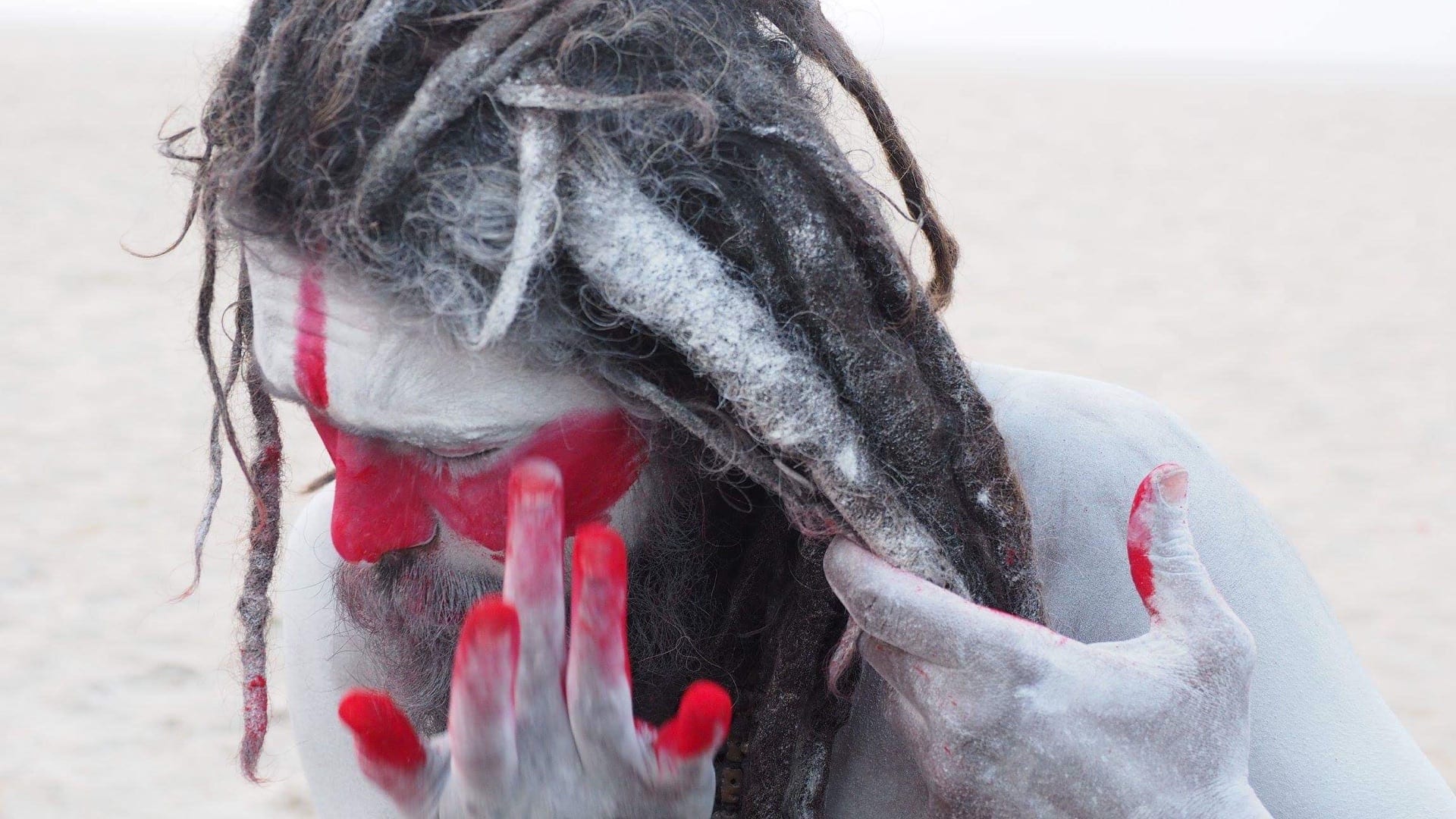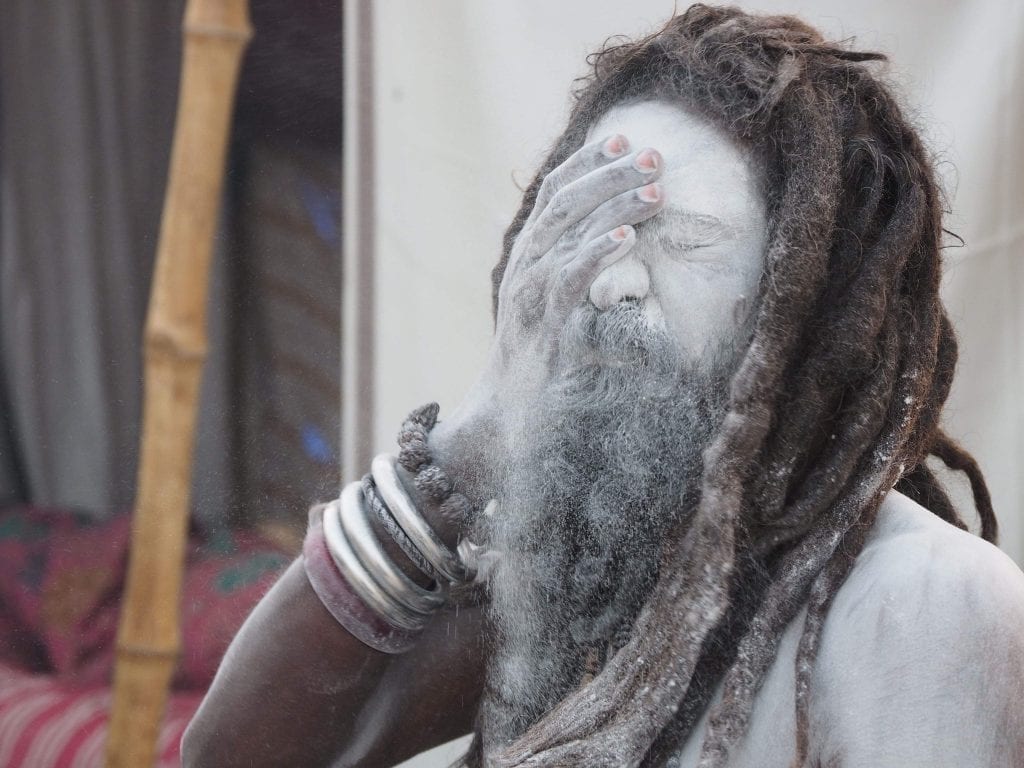

This article is the first instalment of Part 2 in The Grey Global Nomad series
The first I heard about them was that they were cannibals. I was told that they lived in Varanasi (also known as Benares,) where they fished corpses from the Ganges and ate them.
Jodie wanted to photograph them because they looked unusual. She had hired the famous Varanasi photography fixer (a person who gets interesting locals to sit for portraits by travel photographers), Manoj Yadav to arrange a meeting so they could model for her. Cannibals, I thought to myself, corpse eaters, what could be more interesting than that? I had never met a cannibal in my life and thought of them as people who eat others to absorb their life force and thus gain greater power. They would certainly put my life in perspective.
We were walking down the riverfront steps called ‘ghat’ leading to the banks of the river Ganges near the burning ghat where corpses have been lit for 6,000 years for Holy River deposit. Colorful sadhus in orange garb sit meditatively staring out at themselves – compliments of ganja – ready to be photographed by eager tourists willing to spend rupees. They are old men who have left their wives and family in order to seek more light. Most of them are a lot younger than me and I’m minimally impressed, remembering the illusions of wisdom I’d seen in these figures when I was young and believed that True Wisdom was actually somewhere out there; in the days when I believed C.G. Jung to have been a wise man. Wisdom is for the birds; we’re all chasing rainbows. Sparks of glorious visceral insight is all mere mortals are granted.
The smell of the wood fires covers all untoward odors as cows shit at their pleasure whenever they feel the urge. I have to protect Jodie from the sight of fakirs with their little cobras in round bamboo-woven boxes playing seductive flutes for their dancing wards. She is terrified of snakes. Manoj walks over to some dreadlocked Rasta and Jodie chases women in gorgeously lush-colored saris bathing in the ice-cold winter river. There is a boat strike going on so you can’t get a river view of Varanasi’s resplendent patch quilt skyline, which is a photographer’s dream.
To me the boat free river gives rise to free flowing thoughts. And then I forget them. I’m sorry about that because some must have been pretty good. But they drift by as the flotsam of my mind savored like a joy ride during a stolen moment. I wander over to Manoj and Dreadlocks who turns out to be a rivetingly handsome man with lively eyes. He is an Aghori, Manoj explains. The Aghori have their camp with their guru across the river and because of the boat strike he swims across daily with food. I’m a swimmer myself and think it must be quite a winter trek. Manoj is arranging that we will drive by tuk-tuk to his camp. He will already go over with the Aghori man tonight to set up the shoot for tomorrow by adequately socializing. Manoj is a master at his craft. I give him $40 to bring the stranded Aghori some food. What do flesh eaters have for dinner anyway, I wonder. But that’s Manoj’s problem.

The tuk-tuk, a three wheeler device that says put-put-put and seems to be in permanent symbiosis with its horn rides us through overcrowded streets where Google Maps would get seasick and end up mental. We reach the other side of the Ganges, a sandy wasteland for monsoon overflow riddled with thin kite strings that stick to your shoes. Everyone flies a kite here. Two Aghori have come in another tuk-tuk; one of them I recognize as the Rasta man from last night who turns out to be called Butha Nath which has some kind of demonic connotation in the sense of one who fights demons, chasing them off into Nowhere where they belong. The other Aghori carries logs for the campfire and appears unapproachable; I can’t figure out whether he is private, shy or arrogant so I postpone judgment.
At the camp the guru is asleep inside in the way I have appeared after too much partying and ingesting. He wakes up bleary eyed as would I. As a matter of course the first order of business is to crush the ganja to dust so there may be an early morning smoke for the photographer: Aghori through clouds of haze. I’m thinking that no one had wanted to to take my picture when I did a chillum in the Sixties with hashish a trekker friend smuggled to Amsterdam from a Nepalese temple by way of Afghanistan in her fake pregnant belly. But then again I was just any old Dutch hippy and not an exotic Indian flesh eater from the Holy River. I realize I’m not very open-minded today. Maybe I’m just jealous.

Robert Bosnak
Robert Bosnak, PsyA, is a Jungian psychoanalyst who graduated from the C.G. Jung Institute in Zurich in 1977. He pioneered the Embodied Imagination® method, that is being applied by practitioners worldwide. Robert Bosnak is a Core Faculty Member at Jung Platform.
More Posts by Robert Bosnak